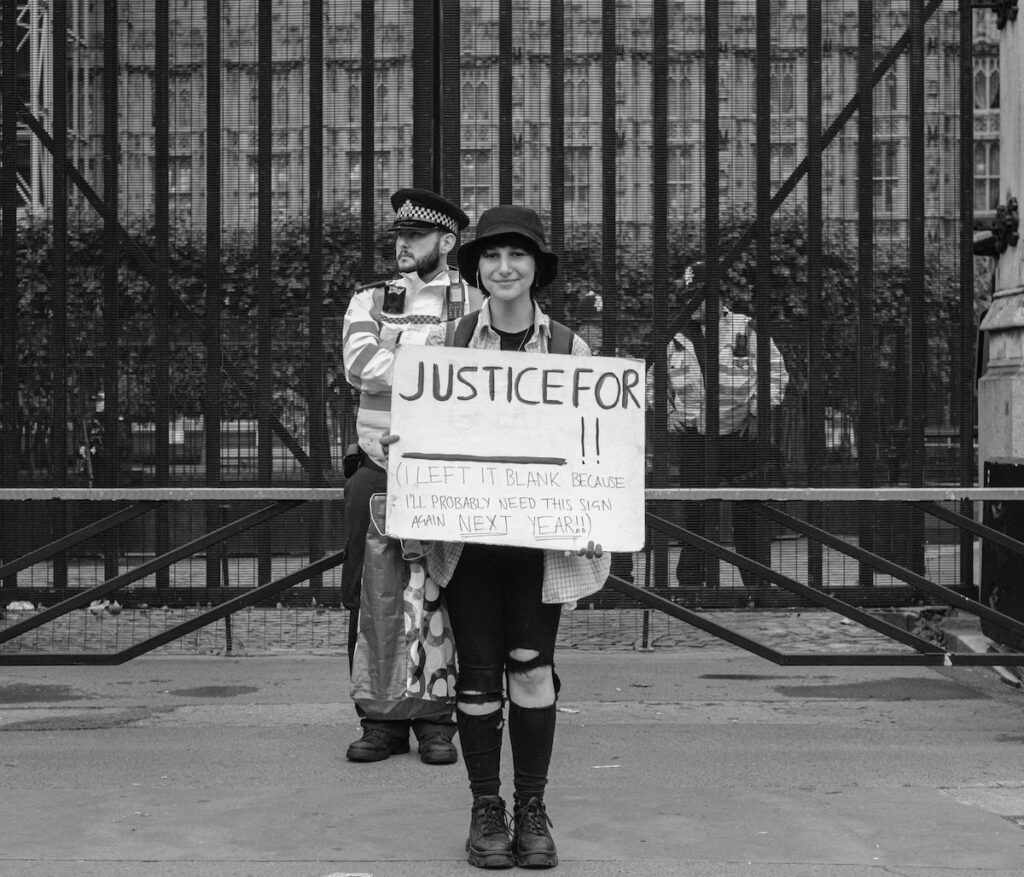
Throughout my training as a medical student and junior doctor, I’ve been taught that men are risky when it comes to suicide. This is not untrue; 75% of suicide deaths in England in 2020 were among males (ONS, 2021) and more men die by suicide globally compared to women (WHO, 2021). However, when you look at individual countries, you see that in some places women are as (or even more) likely to die by suicide than men. And to put it into perspective, suicide is still a significant cause of mortality for women worldwide – 235,000 women died by suicide in 2019 (IMHE, 2019).
The difference between male and female suicide rates can be represented by the M/F suicide ratio. If the M/F suicide ratio is greater than 1, this means that the male suicide rate is higher than the female suicide rate. The higher the ratio, the higher the suicide rate among males compared to females.
Data published by the World Health Organisation (WHO) suggests that gender differences in suicide rates vary according to country income levels, with high-income countries (HICs) tending to have higher M/F suicide ratios than low- and middle-income countries (LMICs) (WHO, 2021). In 2019, the highest age-standardised female suicide rates were seen in lower-middle-income countries (7.1 per 100,000) and the region with the highest rates were Southeast Asia (8.1 per 100 000).
Why is there a sex difference in suicide rates? Traditional theories of suicide predicted that as gender equality increased and women’s roles in society changed, more women would die by suicide (Durkheim, 1987; Dublin 1963). This was based on the idea that participating in education, the professional workforce, and public life (roles traditionally reserved for men) are stressful and therefore “suicidogenic”. On the other hand, traditionally female roles such as domestic tasks and unpaid caregiving were considered non-stressful and therefore “suicide-protective”. Several early studies supported this theory (Mayer, 2000), however, they only looked at a narrow range of industrialised nations. More recent studies have demonstrated that gender equality is protective against female suicides (Milner A. et al, 2020; Alothman and Fogarty, 2020). One theory is that in settings where women have limited self-determination and influence, suicide may be the only available escape route from violence and oppression (Cai Z. et al, 2021).
This blog summarises a multinational, cross-sectional, ecological study by Cai and colleagues (Cai Z. et al, 2021). The research question was: does institutional discrimination against women influence country income-level variability in women’s suicide mortality?

Although male suicide is globally more prevalent, in some countries women’s suicide mortality is higher. Why this might be the case?
Methods
The data used in this study were from a variety of sources. Country income-levels were classified by 2018-2019 World Bank categories (World Bank, 2019a). M/F suicide ratios were calculated from age-adjusted suicide rates obtained from the Global Burden of Disease database (IMHE, 2019). Scores on laws discriminating against women were obtained from the Gender, Institutions, and Development Database 2019 (OECD, 2019a).
The discriminatory laws were then separated into four domains, according to the Social Institutions and Gender Index (SIGI) (OECD, 2019b):
- Discrimination in the family
- Restricted physical integrity
- Access to productive and financial resources
- Civil liberties.
This provided both an overall discrimination score ranging from 0 (no inequality) to 1 (complete inequality) and sub-scores for the four domains. The analysis strategy included a combination of regression and mediation analyses.
Results
176 countries were included in the study. LMICs were found to have higher overall discrimination scores and lower M/F suicide ratios compared to HICs. There was also strong evidence of a link between higher overall discrimination scores and lower M/F suicide ratios.
The mediation analysis found that laws-discriminating-against-women scores fully mediated the association between country income level and M/F suicide ratio. Higher levels of discrimination in three out of the four law domains were associated with lower M/F suicide ratios: discrimination in the family, restricted access to productive and financial resources, and civil liberties.
The table below shows which specific types of laws were found to be important. Evidence for these associations remained after adjusting for sex ratios at birth and male suicide rates.
| Domain | Types of laws included
* Laws with the greatest impact on M/F suicide ratios in LMICs) |
| Discrimination in the family | Child |
| Household responsibilities* | |
| Inheritance* | |
| Divorce* | |
| Restricted physical integrity | Male violence against women |
| Reproductive autonomy | |
| Restricted access to productive and financial resources | Access to land assets* |
| Access to non-land assets* | |
| Access to formal financial services* | |
| Workplace rights | |
| Restricted civil liberties | Citizenship rights* |
| Freedom of movement | |
| Political representation | |
| Access to justice* |

Laws discriminating against women fully mediated the link between country income level and the male to female (M/F) suicide ratio.
Conclusions
- The results of this study suggest that the lower M/F suicide ratios seen in LMICs may be explained by the presence of laws that discriminate against women.
- Suicide rates were relatively higher among women compared to men in LMICs where laws:
- denied women equal rights related to household responsibilities, inheritance, divorce and citizenship, and
- restricted access to justice, assets and financial services.

The higher burden of suicide in LMICs may be explained by higher levels of institutional discrimination experienced by women living in these countries.
Strengths and limitations
The strengths of this study were that it incorporated a large number of countries with different income levels and examined multiple categories of discriminatory laws to provide a more detailed understanding of the types of discrimination that have the greatest impact.
The limitations relate to both the study design and the quality of the data.
The cross-sectional study design does not allow conclusions to be drawn about causation. The study is also vulnerable to ecological fallacy, as aggregate, country-level data may not be applicable to individual people. Furthermore, the study does not consider gender identity, including people who identify as neither male nor female (who are likely to be subject to high levels of discrimination), or within-country differences, for example, the impact of discrimination against women within certain ethnic minority groups living within HICs. The conclusions are therefore likely to be a simplification of a more complex picture.
Moreover, suicide data for LMICs is more likely to have been collected by methods such as verbal autopsy, in the absence of national death registration databases, compared to HICs. This reduces the validity of the data. The authors tested this by running a sensitivity analysis using WHO suicide data as opposed to GBD data. The results were similar, but this could just mean that both datasets are equally flawed. Another issue is that underreporting of women’s suicide deaths is more common in countries where women are highly discriminated against. Therefore, it is likely that the study underestimates the role of discriminatory laws in women’s suicide mortality in LMICs.
Finally, the quality of data on discriminatory laws is limited. The SIGI framework uses composite indicators to summarise complex and multi-dimensional issues. A potential issue with composite indicators is that their development relies on judgment at various stages of the process. However, using domains and sub-scores allows more nuanced conclusions to be drawn.

We need to be cautious when interpreting the results of this study; gender identity beyond the binary was overlooked and not taken into consideration.
Implications for practice
Suicide is a complex phenomenon, the causes of which are highly influenced by social, cultural, and economic contexts. This should be considered by clinicians when assessing suicide risk in their patients, by governments when collecting suicide data and by academics when designing and reporting research studies. Policymakers working to reduce women’s suicides in LMICs should target laws discriminating against women.
The intersecting and complex nature of this topic dictates that research in this area should also be interdisciplinary and multimodal; qualitative and anthropological methodologies should be employed to make sense of data-driven studies such as this. Case in point, I’d like to finish with a quote by Professor Jeanne Marecek, who conducted qualitative research into self-harm and suicide among women and girls in Sri Lanka:
We also need to ask why it is suicide (rather than some other form of action) that is the response that so many women and girls choose in the face of difficult circumstances, threats to their dignity or reputation, or relational impasses. What are the symbolic meanings that suicide enacts? Why are other avenues of action closed off?…In sum, we must work toward complex accounts of suicide and self-harm that embrace individual psychology, culture-specific meaning systems, and large social and economic forces. (Marecek J, 2006)

Policy makers working to reduce women’s suicides in LMICs should target laws discriminating against women.
Statement of interests
None to report.
Acknowledgments
Dr Crowley would like to thank Dr Duleeka Knipe (University of Bristol) for her contribution to this blog, including concept development and feedback on the first iteration.
Links
Primary paper
Cai, Ziyi & Canetto, Silvia & Chang, Qingsong & Yip, Paul. (2021). Women’s suicide in low-, middle-, and high-income countries: Do laws discriminating against women matter?. Social Science & Medicine. 282. 114035. 10.1016/j.socscimed.2021.114035.
Other references
Alothman D, Fogarty A. Global differences in geography, religion and other societal factors are associated with sex differences in mortality from suicide: An ecological study of 182 countries. J Affect Disord. 2020 Jan 1;260:67-72. doi: 10.1016/j.jad.2019.08.093. Epub 2019 Aug 29. PMID: 31493641.
Dublin LI. Suicide: A sociological and Statistical Study. Ronald, New York (1963).
Durkheim E. Suicide: A Study in Sociology (1897).
Institute for Health Metrix and Evaluation. GBD Results Tool (2019).
Marecek, Jeanne. (2006). Young Women’s Suicides In Sri Lanka: Cultural, Ecological and Psychological Factors. Asian Journal of Counselling. 13. 63-92.
Mayer, P. (2000). Development, gender equality, and suicide rates. Psychological Reports, 87(2), 367-372.
Milner A, Scovelle AJ, Hewitt B, Maheen H, Ruppanner L, King TL. Shifts in gender equality and suicide: A panel study of changes over time in 87 countries. J Affect Disord. 2020 Nov 1;276:495-500. doi: 10.1016/j.jad.2020.07.105. Epub 2020 Jul 20. PMID: 32871680.
OECD, 2019a. Gender, Institutions and Development Database.
OECD, 2019b. Social Institutions and Gender Index, SIGI 2019 Global Report.
Office for Natoinal Statistics (2021). Suicide in England and Wales: 2020 registrations.
The World Bank, 2019a. World Bank Country and Lending Group.
World Health Organisation Global Health Estimates (2021) Suicide Worldwide in 2019.
Photo credits
- Photo by Tingey Injury Law Firm on Unsplash
- Photo by Brett Zeck on Unsplash
- Photo by Alex Sorto on Unsplash
- Photo by Ehimetalor Akhere Unuabona on Unsplash
- Photo by Néstor Morales on Unsplash
- Photo by Jesús Boscán on Unsplash
